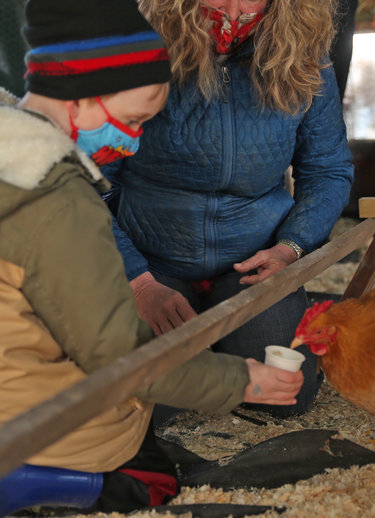State says risk to public ‘remains low’ as bird flu evolves
NEW YORK — Bird flu is still affecting poultry in New York state, despite not having yet made its way to cows, cats, or people the way it has in other parts of the country.
In a measure that’s being framed as both reactive and proactive, Governor Kathy Hochul announced on Feb. 7 that live bird markets in Westchester County and all counties south of it are being closed temporarily for disinfection after the disease was detected in seven different New York City markets.
New York State Health Commissioner James McDonald said in a press release that there is “no immediate threat to public health,” but has warned that people who work closely with livestock and wild birds should be sure to wear protective equipment.
Bird flu currently poses its biggest threat to the agricultural industry, as The Enterprise has covered before, but also is taking worrying steps toward greater human-infection capabilities.
There have been 67 confirmed human cases of bird flu in the United States so far, including one death. Most of the cases — 38 — have been in California, where there is also the greatest number of cattle herds infected, according to the Centers for Disease Control and Prevention.
The disease is currently believed to spread to people through animal fluids like saliva, mucus, and unpasteurized milk, as well as undercooked infected meat, according to University of Chicago Medicine, but does not yet appear to move from person to person.
The New York Times reported on Feb. 6 that the CDC had briefly posted (then removed, for unclear reasons) a report that included the first known transmission between people and cats, another species that, like cows, appears to now be especially vulnerable to the disease and puts humans at greater risk.
According to the United States Department of Agriculture, there have been 69 cases of bird flu in domestic cats since the disease began showing up in cattle in March of 2024. The disease is often fatal for cats, with the top two symptoms reported by the American Veterinary Medical Association being neurological (ataxia, seizures, etc.) and “severe depression,” along with respiratory symptoms.
The threat to agriculture is also increasing as cattle have now been found with a second strain of the bird flu, according to the USDA, which several experts who spoke with The New York Times said is a surprising development that suggests cattle may be more susceptible to bird flu in general than previously thought.
That second form, D1.1, is what killed the sole U.S. victim, a Louisiana resident above the age of 65 with underlying conditions who was exposed to both a backyard non-commercial flock and wild birds, according to the Louisiana Department of Health.
Although experts say it’s still not of immediate concern to people, it means that cows who catch one form of the virus may still be vulnerable to another, creating additional strain on farmers and the food supply.
The soaring price of eggs is a direct result of bird flu’s spread among poultry, but has not yet affected milk prices, according to Nebraska Public Media.
President Donald Trump has recently appointed veterinarian Gerald Parker, former associate dean of the Global One Health at Texas A&M’s College of Veterinary Medicine and Biomedical Sciences, as well as a former government health official, as head of the United States’s pandemic preparedness office, according to Bloomberg.
The office was established in 2023 by the Biden administration. Parker has previously advised U.S. lawmakers on the bird flu, Bloomberg reports.



